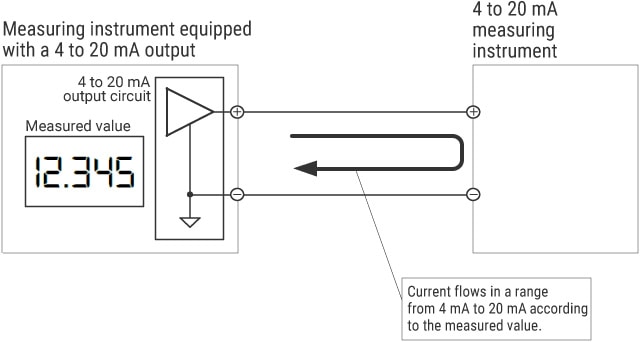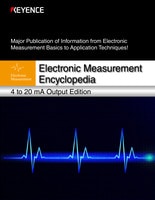What Is “4 to 20 mA”?
“4 to 20 mA” is a type of analog output. “4 to 20” means that current is output in a range between 4 mA and 20 mA. This output is widely used as sensor outputs and control signals, especially as standard analog outputs from instrumentation devices.
Characteristics of 4 to 20 mA output
This output is suited for long-distance transmission because it can easily be imported into instruments such as controllers and recorders through voltage conversion and because it is highly resistant to noise. It also has a high fail-safe characteristic as it drops to 0 mA when a disconnection has occurred.

Classification of measurement methods
There are various methods to measure 4 to 20 mA. The method is selected according to the instruments to be used and the status of the wiring with other devices.
- Single connection: Measurement methods when not connected to other input devices
- Measurement method using an instrument equipped with a 4 to 20 mA input
- Measurement method using a shunt resistor to convert current to voltage
- Measurement method using a signal converter
- Plural connection: Measurement methods when connected to other input devices
- Measurement method using a voltage input instrument
- Measurement method using an instrument equipped with a 4 to 20 mA input
- Measurement method using a shunt resistor to convert current to voltage
- How to measure 4 to 20 mA output from a 2-wire sensor
* Note: The measurement methods shown above are not intended to measure circuit current or power supply current.





